"Coast" against "air": the use of the A-222 self-propelled artillery system as a highly effective air defense system
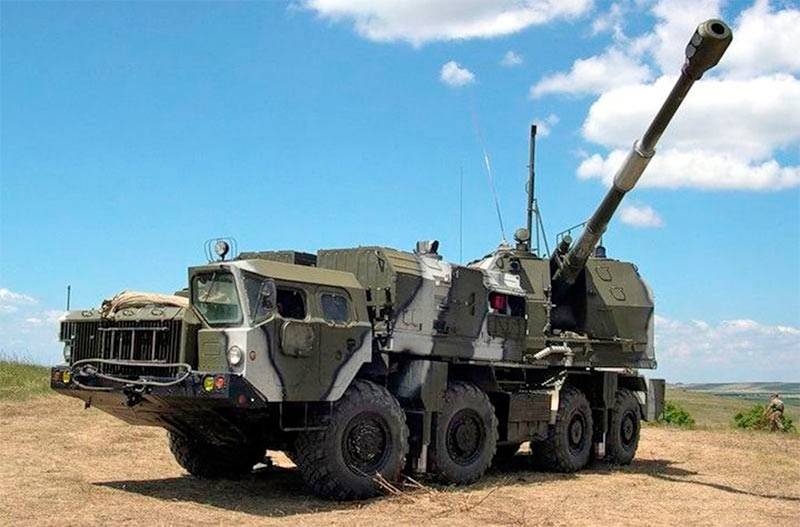
The longer the Russian special operation in Ukraine continues, the more impudent the enemy becomes, the more precision-guided munitions are sent to Ukraine. USA only deliver dozens of launchers (PU) M142 HIMARS and hundreds of guided projectiles for them, the possibility of delivering ATACMS tactical missiles launched from these launchers cannot be ruled out, the United States also imports dozens of towed and self-propelled artillery systems of 155 mm caliber, thousands of guided and tens of thousands of unguided shells to them.
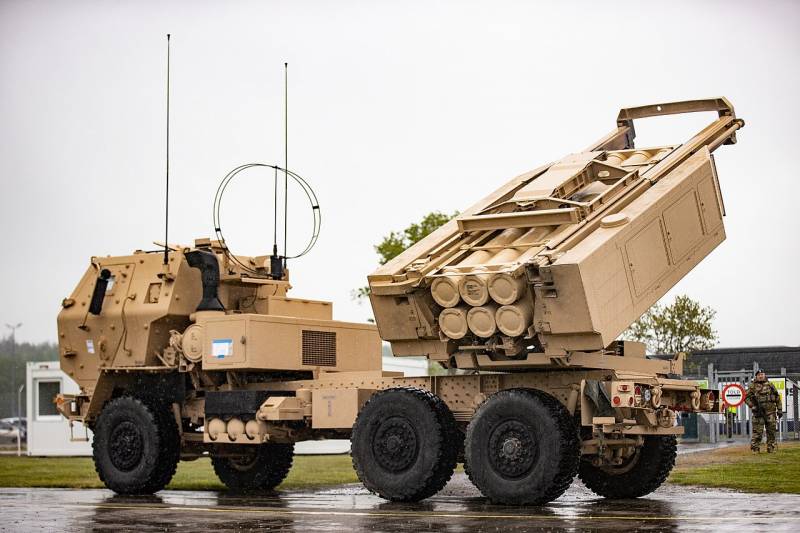
Western long-range systems cause significant damage to the Russian armed forces and civilian infrastructure. Image by wikipedia.org
In addition, Ukraine is still manages carry out the production of certain types of weapons, its military-industrial complex (MIC) turned out to be much more stable than it seemed many. Strikes against critical infrastructure are still clearly not enough to completely disable it and stop production throughout Ukraine.
Under these conditions, the Russian Air Defense Forces are working with an increased load, a significant number of anti-aircraft guided missiles (SAMs) are being used, which have a very high cost. At the same time, as we can see from the media, it is impossible to create an impenetrable shield, some of the Ukrainian missiles and shells reach their targets - just remember the Kakhovka bridge in the Kherson region.
Thus, we have two problems.
The first is that enemy ammunition is penetrating our air defense barrier, and we need to find any way to increase its density.
The second problem is the high cost of anti-aircraft ammunition. What alternatives do we have?
Flak
Of course, anti-aircraft artillery immediately comes to mind - the cost of artillery shells is much lower than missiles. However, the probability of hitting air targets by them is much lower, especially if these targets are small, inconspicuous and high-speed.
The situation can be corrected by remote detonation of shells on the trajectory, and our opponents are actively working in this direction. In particular, the German company Rheinmetall presented a new short-range anti-aircraft system Skynex, where a 35 mm rapid-fire cannon using projectiles with remote detonation on a trajectory acts as a means of destruction.

Detonation frame of one of the projectiles with remote detonation on the trajectory from the presentation of the Rheinmetall Skynex complex
The presentation can be viewed by clicking on this link.
The US wants to go even further and develop guided projectiles for guns up to 20 mm caliber - we previously talked about this in the material "30-mm automatic guns: sunset or a new stage of development". However, knowing the American military-industrial complex, we can assume that these guided missiles will be more expensive than missiles.
In Russia, 30-mm projectiles with remote detonation on the trajectory seem to have been developed by the Moscow NPO Pribor. Unlike the inductive system used by Rheinmetall, Russian projectiles use a remote detonation initiation system using a laser beam.
It was assumed that 30-mm projectiles with remote detonation on the trajectory would be tested in 2019 and would later be supplied to the Russian army. In 2021, Oleg Chizhevsky, General Designer of NPO Pribor, told RIA "News» about the fact that remotely detonated ammunition for 30-mm guns has already entered the stage of state tests and that they will be included in the ammunition of combat support vehicles tanks (BMPT) "Terminator", but at the moment no more information has been received on this topic.
Let's hope that the work will be completed in the near future, since 30-mm caliber shells with remote detonation on a trajectory like air are needed by all branches of the Russian armed forces.
Another promising project of the Armed Forces of the Russian Federation (RF Armed Forces) is the 57 mm caliber Air Defense Derivation complex, which we talked about in one of the previous materials.
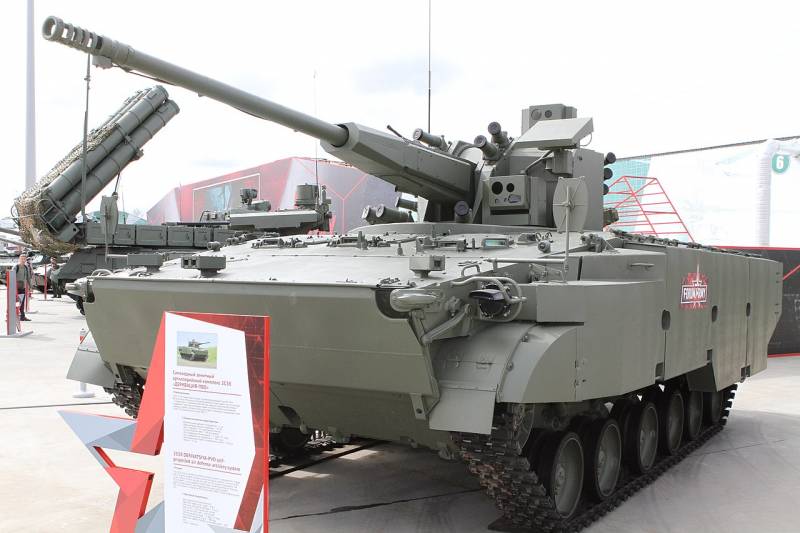
Complex "Derivation of air defense". Image by wikipedia.org
The Air Defense Derivation complex should effectively deal with air targets using projectiles with remote detonation on the trajectory. According to a number of sources, the Derivation-Air Defense complex is potentially capable of fighting multiple launch rocket systems (MLRS) projectiles, which means that it will also be able to shoot down the vaunted HIMARS projectiles.
There is no information on the timing of the entry of the Air Defense Derivation complex into service, and most importantly, on the readiness of shells with remote detonation on the trajectory, without which there will be little use from the Derivation.
So what other alternatives do we have?
Self-propelled artillery complex A-222 "Bereg"
Formally, the A-222 "Coast" complex of 130 mm caliber belongs to the Naval the fleet (Navy) of the Russian Federation, and in the NVO zone, it was presumably not used, but the potential of this machine is very significant.
Quite a decent firing range, about 23 kilometers, is combined with a high rate of fire - up to 12 rounds per minute. Another advantage of the A-222 "Bereg" complex is the wheeled chassis, which allows you to quickly change position, although, on the other hand, because of it, the patency of the complex is limited compared to tracked vehicles.
If we talk about the artillery use of the A-222 "Bereg" complex, then artillery batteries from three to six A-222 "Bereg" complexes could quickly move into position, deal a crushing blow to the enemy and go deep into Russian battle formations.
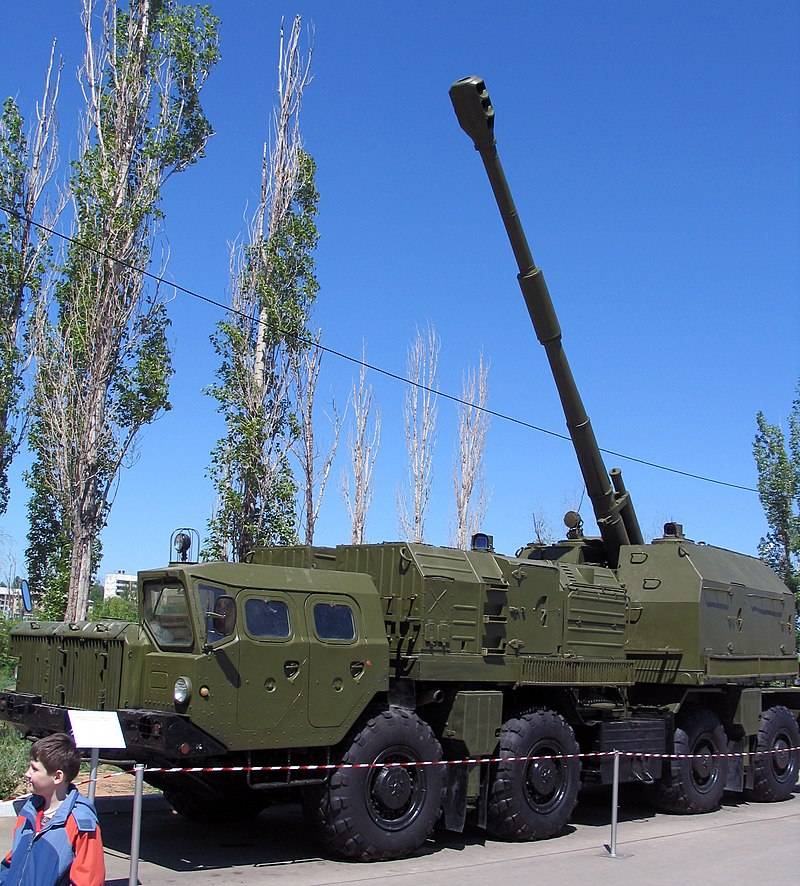
Self-propelled artillery complex A-222 "Coast". Image by wikipedia.org
The Russian Navy has 36 such systems, but how much does the Navy need them? Their use against enemy ships is another event, after all, the capabilities of artillery and anti-ship missiles are not comparable. On the other hand, when using the A-222 "Bereg" in the interests of the ground forces, it will complicate logistics - separate deliveries of 130 mm caliber shells will be required.
However, the A-222 "Bereg" complexes have another potentially much more interesting area of \uXNUMXb\uXNUMXbapplication than artillery support for ground forces ...
The fact is that the ammunition of the A-222 "Bereg" complex includes anti-aircraft rounds A3-UZS-44 and A3-UZS-44R. The A3-UZS-44 shot is equipped with a DVM-60M1 remote fuse, and the A3-UZS-44R shot is equipped with an AR-32 radar fuse. Information on how the delay time for detonation of the remote fuse in the A3-UZS-44 projectile is set could not be found. If it is introduced manually, then these projectiles are useless for us, but if automatically, then they can be effectively used to destroy air targets of all types, similar to how it will be implemented in the Derivation-Air Defense complex, while the power of a 57 mm caliber projectile and does not stand next to the power of a 130 mm caliber projectile.
In addition, the A-222 ammunition load includes A3-UZS-44R rounds with an AR-32 radar fuse, which, when hitting anti-ship missiles, misses up to 8 meters, and when hitting aircraft, up to 15 meters.

130-mm shot A3-UZS-44R with radio fuse type AR-32
History shells with a radar fuse began during the Second World War, when they became secret and highly effective weapons American fleet - for some time they were even forbidden to use over land, so that the enemy could not detect and copy them. An article was published on the pages of the Military Review about shells with a radar fuse "The Remote Fuse That Saved London and the American Navy".
The AK-130 shipborne artillery mounts, on the basis of which the A-222 complex was created, initially have the ability to work on air targets, but they can be guided by shipborne radar stations (RLS). The A-222 "Bereg" has a significantly lower rate of fire and ammunition compared to ship guns, in addition, the central post of the "Bereg" complex, which includes the BR-136 fire control system with optical-electronic and radar channels for detecting and maintaining detected targets, most likely, will not be able to detect air targets, especially small and high-speed ones.
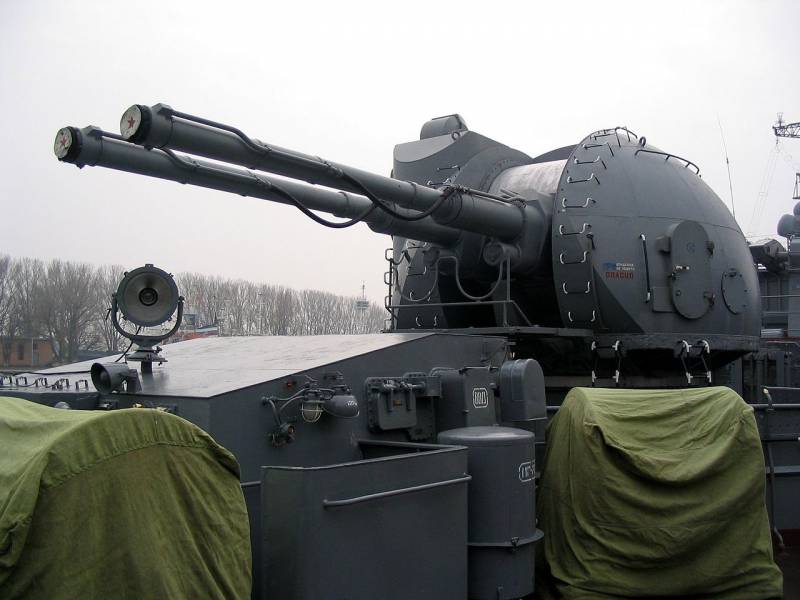
Shipborne artillery mount AK-130. Image by wikipedia.org
Thus, to ensure the operation of the A-222 "Bereg" complex against air targets, it will require its deep interface with any modern anti-aircraft missile system (SAM), which will give it target designation for firing. Considering the presence of anti-aircraft shells in the A-222 "Bereg" ammunition load, the possibility of such a pairing in the design of the complex is most likely provided.
With which air defense system is it preferable to match the A-222 "Bereg" complex? It is not possible to give an answer to this question, for this it is necessary to have access to information of limited distribution, and this is not required at the current stage.
The main issue determining the feasibility of integrating the A-222 "Bereg" complexes into the air defense system is the availability and effectiveness of A3-UZS-44R anti-aircraft shells with AR-32 radar fuses. And it doesn’t seem like it happened that nominally such anti-aircraft shells are included in the ammunition load, but in fact there are 50 of them in warehouses throughout the country, and of them, conditionally, only one in ten fires when fired. If so, then it destroys the whole idea in the bud.
If there are enough A3-UZS-44R anti-aircraft shells of 130 mm caliber with AR-32 radar fuses, and their reliability and effectiveness are confirmed, then the use of A-222 "Bereg" complexes as an air defense system can become one of the simplest and most effective ways to significantly increase the security of critical facilities from massive attacks by unmanned aerial vehicles (UAVs), artillery and MLRS.
For example, the city of Kherson, as the most important foothold of the RF Armed Forces on the right bank of the Dnieper, and the infrastructure adjacent to it, as well as the Zaporozhye nuclear power plant, whose destruction can lead to unimaginable consequences, can be indicated as such objects.
Potentially, covering each of these facilities with six A-222 Bereg complexes integrated with other air defense systems will make it possible to largely devalue enemy air attacks. In addition, do not forget about the artillery essence of the A-222 "Bereg" complex - if necessary, half a dozen of these machines can bring down a steel hail of 72 shells per minute or 240 shells of full ammunition on the advancing enemy in less than four minutes.
PS
There are some more interesting questions:
1. Can A3-UZS-44R anti-aircraft shells be used against ground targets as air-blasted munitions and what will be their effectiveness with this use case?
2. Can AR-32 radar fuses be installed in 152 mm caliber shells to use the latter to destroy air targets?
3. Are other radar fuses of the AR line (AR-5 ... AR-45) currently used in 152 mm caliber shells to provide air blasting, and if not, why not?
Information